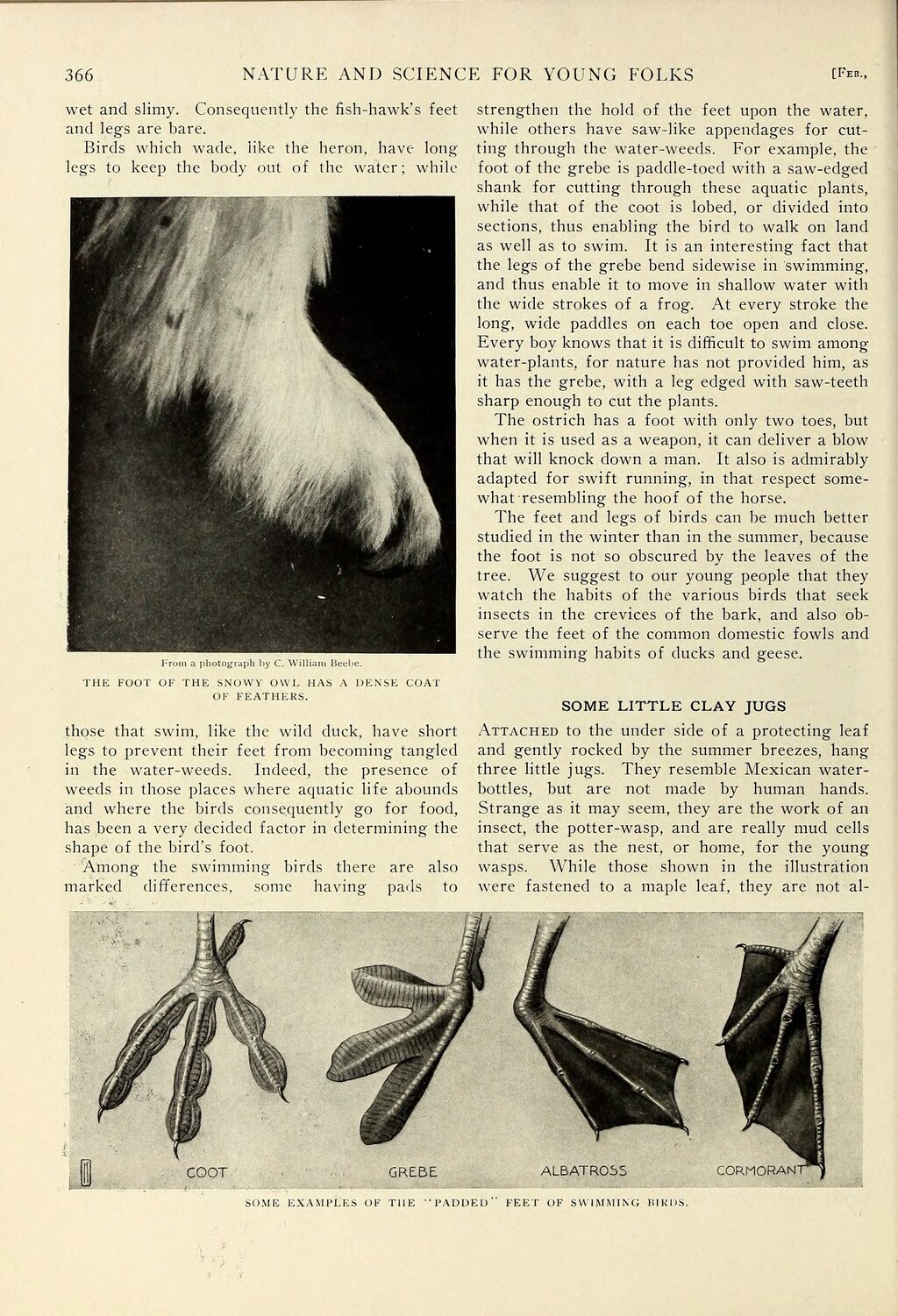wet and slimy. Consequently the fish-hawk’s feet and legs are bare.
Birds which wade, like the heron, have long legs to keep the body out of the water; while those that swim, like the wild duck, have short legs to prevent their feet from becoming tangled in the water-weeds. Indeed, the presence of weeds in those places where aquatic life abounds and where the birds consequently go for food, has been a very decided factor in determining the shape of the bird’s foot.
Among the swimming birds there are also marked differences, some having pads to 
From a photograph by C. William Beebe.
THE FOOT OF THE SNOWY OWL HAS A DENSE COAT OF FEATHERS. strengthen the hold of the feet upon the water,
while others have saw-like appendages for cutting through the water-weeds. For example, the foot of the grebe is paddle-toed with a saw-edged shank for cutting through these aquatic plants, while that of the coot is lobed, or divided into sections, thus enabling the bird to walk on land as well as to swim. It is an interesting fact that the legs of the grebe bend sidewise in swimming, and thus enable it to move in shallow water with the wide strokes of a frog. At every stroke the long, wide paddles on each toe open and close. Every boy knows that it is difficult to swim among water-plants, for nature has not provided him, as it has the grebe, with a leg edged with saw-teeth sharp enough to cut the plants.
The ostrich has a foot with only two toes, but when it is used as a weapon, it can deliver a blow that will knock down a man. It also is admirably adapted for swift running, in that respect somewhat resembling the hoof of the horse.
The feet and legs of birds can be much better studied in the winter than in the summer, because the foot is not so obscured by the leaves of the tree. We suggest to our young people that they watch the habits of the various birds that seek insects in the crevices of the bark, and also observe the feet of the common domestic fowls and the swimming habits of ducks and geese.
SOME LITTLE CLAY JUGS
366

